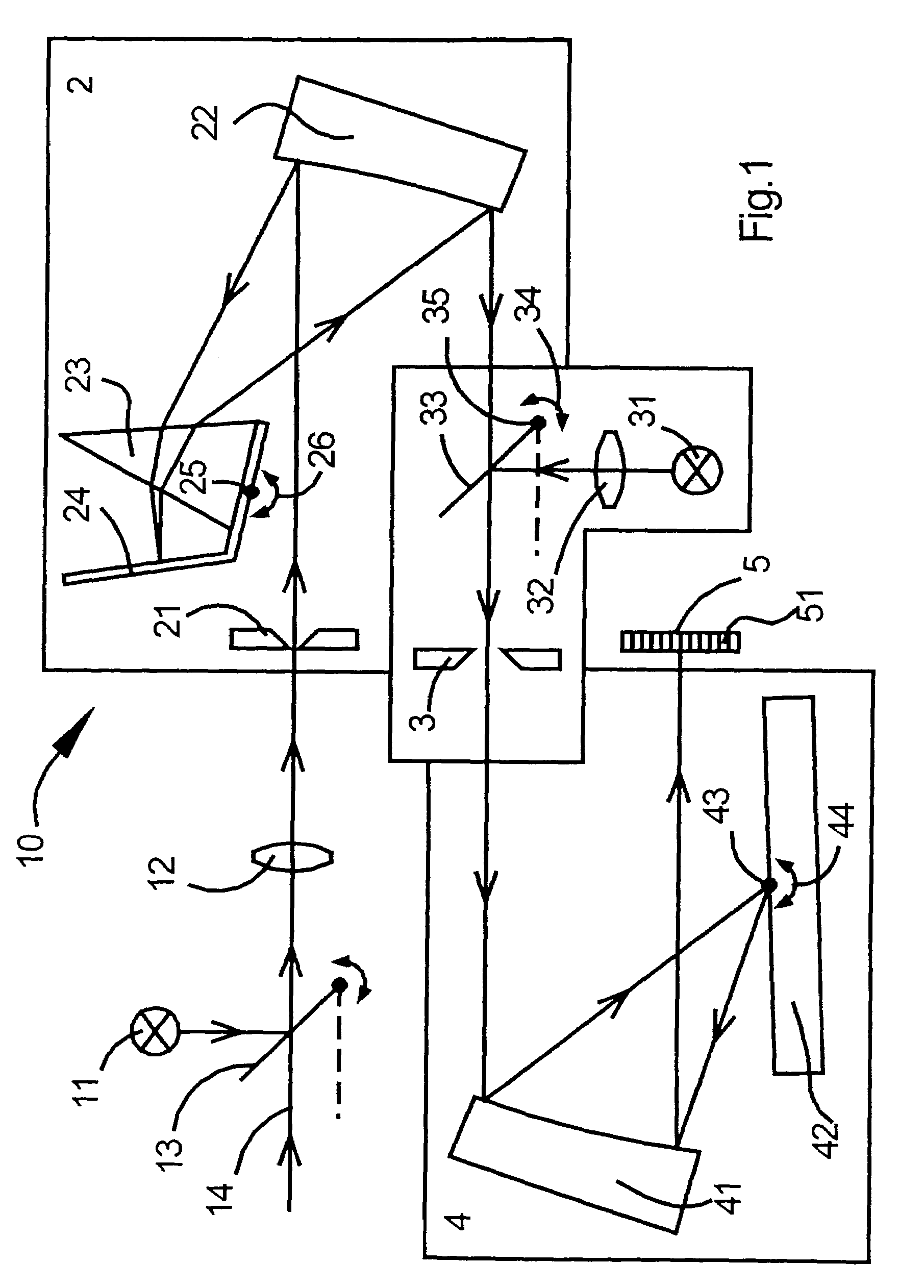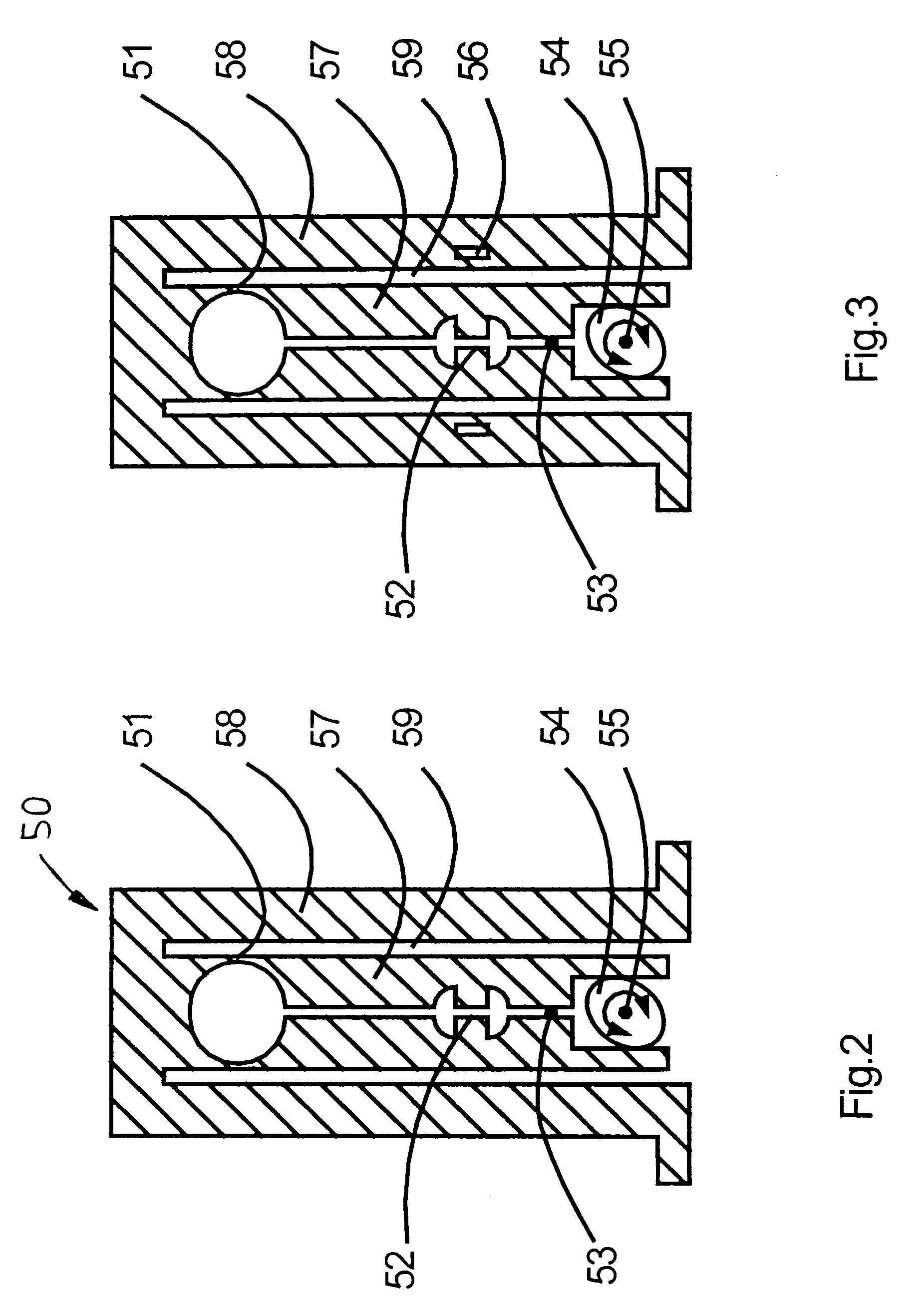Assembly and method for wavelength calibration in an echelle spectrometer
a technology of echelle spectrometer and wavelength calibration, applied in the field of spectrometer, can solve the problems of increasing light transmission and decreasing resolution, and achieve the effect of reducing measurement errors
- Summary
- Abstract
- Description
- Claims
- Application Information
AI Technical Summary
Benefits of technology
Problems solved by technology
Method used
Image
Examples
Embodiment Construction
[0032]In FIG. 1 numeral 10 denotes a spectrometer assembly. The assembly 10 comprises a pre-monochromator 2 and an echelle spectrometer 4. Numeral 21 denotes the entrance slit of the pre-monochromator 2. It is illuminated by a light source 11 with a continuous wavelength spectrum for calibration. Such a light source is for example a Xenon high pressure short arc lamp. For this purpose a rotatable mirror 13 and a lens 12 are arranged in the measuring optical path 14 as an imaging element. The entrance slit 21 has a fixed slit width of 25 microns, corresponding to the width of a detector element 51 of a CCD-linear array 5 used as a spatially resolving light detector. The entrance slit 21 forms the field stop for the double spectrometer assembly and defines the width of a monochromatic beam at the location of the detector 5.
[0033]The incident divergent light beam is deflected and collimated by a paraboloidal mirror 22. The parallel light passes through a prism 23. Thereby the light is ...
PUM
 Login to View More
Login to View More Abstract
Description
Claims
Application Information
 Login to View More
Login to View More - R&D
- Intellectual Property
- Life Sciences
- Materials
- Tech Scout
- Unparalleled Data Quality
- Higher Quality Content
- 60% Fewer Hallucinations
Browse by: Latest US Patents, China's latest patents, Technical Efficacy Thesaurus, Application Domain, Technology Topic, Popular Technical Reports.
© 2025 PatSnap. All rights reserved.Legal|Privacy policy|Modern Slavery Act Transparency Statement|Sitemap|About US| Contact US: help@patsnap.com



